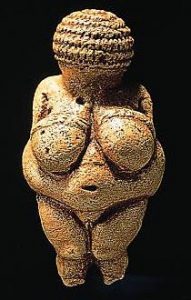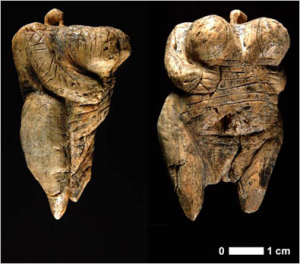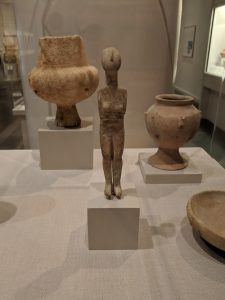If I were to ask you what your favorite piece of art is, who your your favorite artist may be, what would you say? Maybe Van Gogh or Da Vinci? Andy Warhol? Or how about if I asked you what type of art fascinated you the most? Would you say something like cubism, pointilism, or some form of abstraction? (Feel free to answer in the comments, by the way)
The form of art that perplexes me the most is that of ancient sculpture, more specifically humanoid figures carved from the Paleolithic Period to the Bronze Age. When I look at their vague or deformed bodies, carved out of marble, bones, and stones, I’m dumbstruck as to what these figures were created to do, and historians are no better off.
Venus Figures
From the Paleolithic Period or ‘Old Stone Age’, there are hundreds of ‘Venus Figures’ thought to be representative of fertility or good fortune– at least that’s historians’ best guess. The proportions of these figures are quite overblown, the stomach and breasts being far larger than the tiny feet or hands. The Venus of Willendorf is one of the best known of these figures, pictured 
25,000 BCE
Perhaps these figures were charms, as some lacked a head, instead having a loop. Perhaps they could then be worn around one’s neck or waist. An example of this sort of design is the Venus of Hohle Fels, pictured right. This work is the oldest of the Venus figures, at 35,000 years old, the second known sculpture of representative man-made art.

But… why? What inspired ancient humans to create this type of art? Did they know that it was art? The agricultural revolution had yet to happen, meaning we still existed as hunter-getherers, roaming the plains. Life was by no means easy or sedentary, yet some old someone thought it was an important use of time and resources to produce this type of work. It’s easy to love those tenacious early humans. They had zest.
Female Cycladic Figures
Okay, so fast forward 25,000 years to the Mediterranean Sea. The Cycladic Islands, or Cyclades are over 200 small islands near both Greece and Turkey, evidenced to have interacted with Minoan and Mycenaean civilizations. Among the early figures carved of women, The Cycladic Figures are unique in that their simplicity acts as a sign of maturity, rather than being the result of primitive technology. Most of these figures are carved of marble, using obsidian as the paring tool. Like the venus figures, there are hundreds of these gals.
The viewer is able to locate simple legs, arms, breasts, and a nose. Other details such as jewelry or facial features would have been added after carving, through the use of paints. The feet are always pointed, making it impossible for the figures to stand on their own. The San Antonio Museum of Modern Art has one in their possesion, if you’d like to examine one in person.

Despite their abundance and singular origin, these figures are a mystery as well, found in tombs, shrines, and homes. The justifications for these figures are often chalked up to the same reasonings as the Venus figures– fertility, protection, etc.
Interesting to note about the Cycladic Figures, there was once a craze for Cycladic Art that led to grave robbings and figures being ill-gotten. It is unsurprising that the SAMA would have one of these figures in its collection, but it makes one curious as to how this figure was acquired, though it was donated by a private individual. That may well remain just as much of a mystery.
So… do you love these figures yet? Are they strange to you? Are they super-boring stuffy old art? It’s interesting to ponder when we decided as a species to create things in our image, or abstracted, in an imaginary image. What is the origin of art? What do you think?

OKAY, GLORY I SEE YOU! I actually studied archeology in the Cycladic Islands and the interactions between the Mycenaean and the Minoan civilizations so you bring something very near my heart. I ABSOLUTELY loved and preferred studying the “prehistoric” art much more than the bronze and so on. There is something to be said about the interpretation in the cult pieces, pottery, and statuettes from the early time periods. I love the “primitive” artwork because I felt that the artists worked with what they had and made something “plain” yet so beautiful. I also think there is something to be said about the different body shapes and different colors they use to interpret the art.
I have some pictures from museums I worked in Greece with artifacts from this time period if you wanna hit me up!
So fascinating Glory. As a kid, art was always something I was drawn to. I found it so relaxing and soothing. Later as looked back on my life, I began to realize that it was an escape for me. Surprisingly this was never something I lost, though upon realizing I couldn’t draw I turned a lot of my attention to sculptures and such. its still something I do today just not as often cause I can’t convince myself to buy a kiln. I still very much enjoy all areas of art though. lately I would say Ive been most drawn to the work of Claudio Bravo and Kate Clark. Some might argue Clark isn’t necessarily art though.